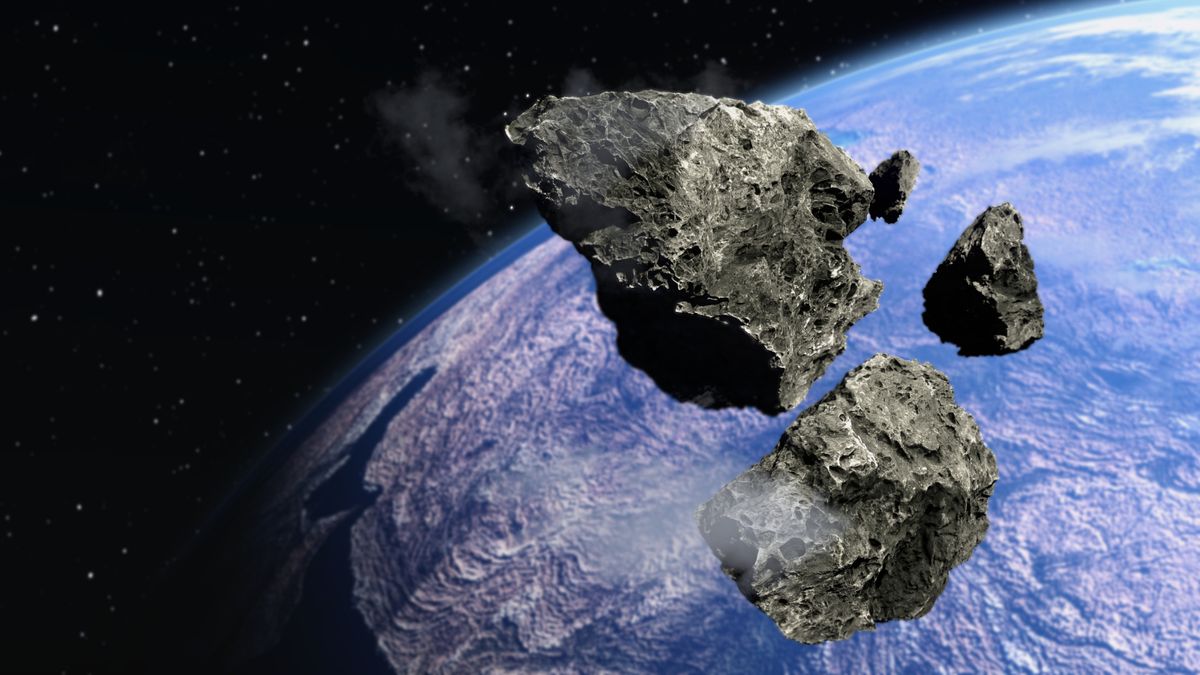A quartet of particularly hefty asteroids, including two that were discovered earlier this month and another that is as tall as a skyscraper, will make their closest approaches to Earth on Thursday (Oct. 24) — all within 12 hours of one another. The “potentially hazardous” space rocks will all get similarly close to our planet, but pose zero threat to life on Earth.
The first asteroid to make its closest approach will be 2015 HM1, also the smallest of the four space rocks at around 100 feet (30 meters) across. It will reach its closest point to our planet at around 4:36 a.m. UTC (0:36 a.m. EDT) when it reaches a minimum distance of 3.4 million miles (5.5 million kilometers) from us, according to NASA’s Asteroid Watch dashboard. (That’s roughly 14 times the average distance between Earth and the moon.)
The next visitor will be the roughly 170-foot-wide (52 m) space rock 2024 TP17, which will make its closest approach at around 8:20 a.m. UTC (4:20 a.m. EDT) and will get to within 2.9 million miles (4.7 million km) of our planet.
The final two asteroids — 2002 NV16 and 2024 TR6 — will make their closest approaches within just four minutes of each other. 2002 NV16, which is around 580 feet (177 m) across, making it the largest of the four, will reach a minimum distance of 2.8 million miles (4.5 million km) at around 15:47 p.m. UTC (11:47 a.m. EDT). It will be quickly followed by the 150-foot-wide (46 m) asteroid 2024 TR6, which will come within 3.5 million miles (5.6 million km) of Earth at 15:51 p.m. UTC (11:51 a.m. EDT).
Related: ‘Planet killer’ asteroids are hiding in the sun’s glare. Can we stop them in time?
Two of the four asteroids — 2024 TR6 and 2024 TP17— were only recently discovered: the former was initially spotted on Oct. 7, and the latter was first seen on Oct. 12. That’s not unusual; astronomers spot around 2,000 near-Earth asteroids every year, most of which are spotted as they near their closest approaches to Earth, according to the Catalina Sky Survey.
The asteroids are all listed as potentially hazardous because their orbits around the sun bring them within 30 million miles (48 million km) of Earth. Most of them are not large enough to cause widespread damage if they ever hit the planet (which they won’t). However, the largest of the incoming rocks, 2002 NV16, is large enough to wipe out a large city and cause planet-wide effects.
The asteroids will not be visible from Earth. However, scientists may be able to capture radar images of the space rocks, which could help reveal more information about the newly discovered objects. Similar grainy images recently captured a bizarre snowman-shaped asteroid as it tumbled past Earth and revealed an unexpected trajectory change for a pyramid-size space rock.
Some of the approaching asteroids will make even closer flybys of Earth over the next few decades: 2024 TR6 will return on Aug. 5, 2039, when it will reach a minimum distance of 1.2 million miles (1.9 million km) from our planet; and 2024 TP17 will get to within 1.3 million miles (2.1 million km) of Earth on Oct. 25, 2040.


